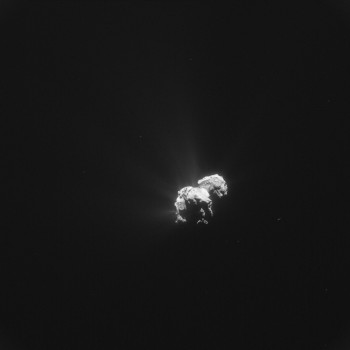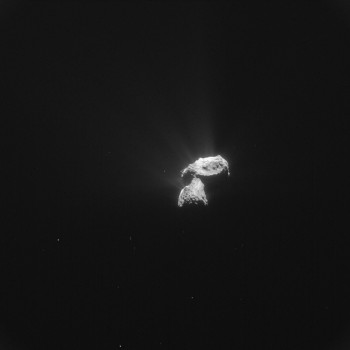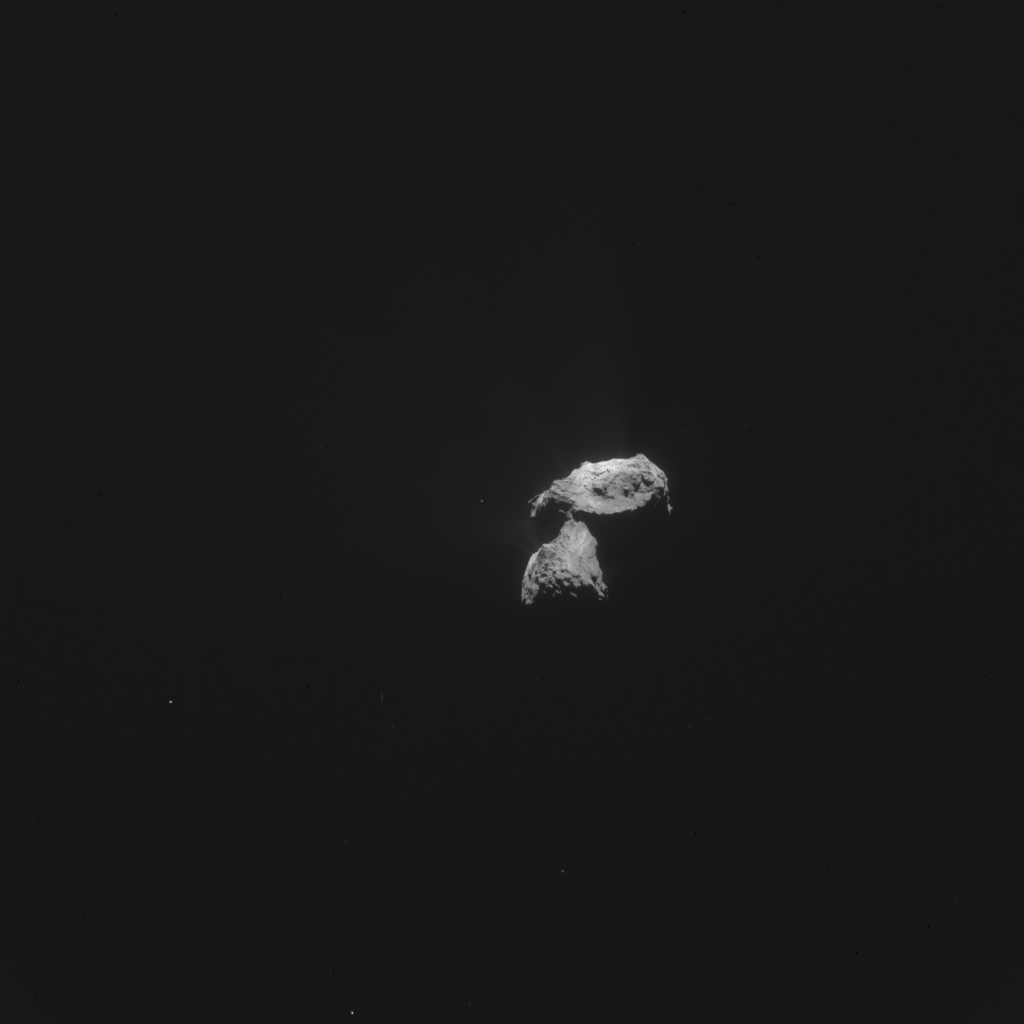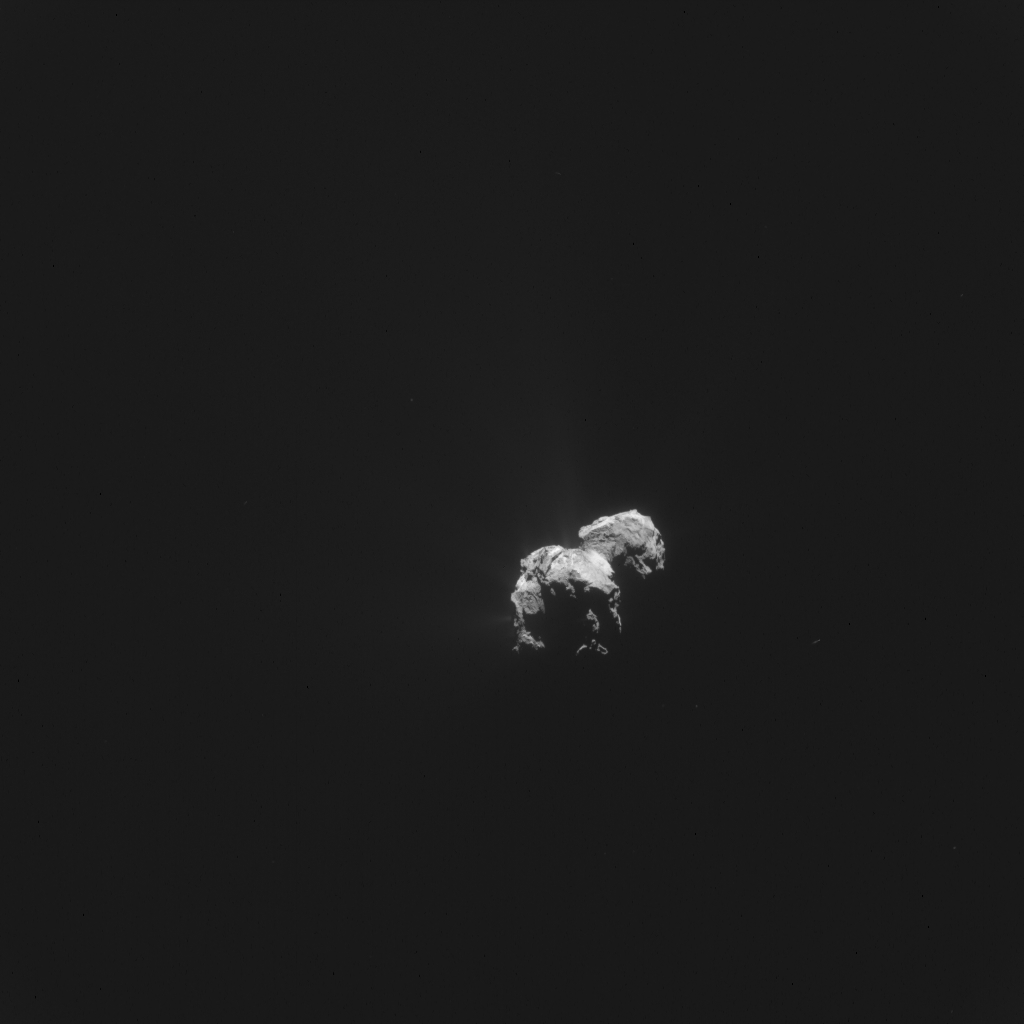CometWatch this week comprises two NAVCAM images acquired six hours apart on 26 October 2015.
The images have been lightly enhanced to reveal some detail of the comet’s activity (the unprocessed images are available at the end of the post). In the six hours that passed Rosetta also moved 2.3 kilometres closer to the comet, resulting in slightly different image scales between the two images.
 |
 |
Caption: Left: Comet 67P/C-G at 13:31:01 UT on 26 October from a distance of 312.7 km. The image scale is 26.6 m/pixel and the image measures 27.3 km across. Right: The view 6 hours later, at 19:27:53 UT, from a distance of 310.4 km. The image scale for the second image is 26.5 m/pixel and the image measures 27.1 km.
Since Comet 67P/Churyumov-Gerasimenko’s rotation period is a little over 12 hours, these two images are separated by about half a comet rotation, offering complementary views of the nucleus. In both orientations, jets can be seen rising from the sunlit side of the nucleus.
In the left-hand image the large lobe is in the foreground, with Imhotep facing the viewer, albeit largely in shadow. Similarly, the outline of the Aten depression, also in shadow, can just be made out to the right. Above Aten, towards the centre of the image, are the Khepry and Aker regions, with Anhur towards the upper left of the large lobe.
On the small lobe in the background it is mostly Bastet that is visible, with a hint of Wosret appearing as the flat portion at the top left.
Six hours later and the comet’s small lobe is in the foreground, the large lobe in the background, with the Anuket region of the comet’s neck visible in between. On the large lobe the ridge separating Seth (itself not visible) from the smooth Anubis region can be readily picked out, appearing as the arc-shaped feature on the lower right edge of the large lobe; Seth is in fact beneath it, cast in shadow. The more rugged Atum and parts of Khonsu can be seen beyond, in the upper part of the image.
Meanwhile the rough terrain on the small lobe contains parts of Serqet, Nut, Ma’at and Maftet, with Wosret to the far left.
If you’re finding it hard to navigate, then do check out our interactive comet viewer alongside our CometWatch posts and toggle the regions on and off.
In other CometWatch news, 1003 images were added into the NAVCAM Archive Image Browser yesterday. They cover the period 11 March–5 May 2015 and include images from the 14 km close flyby on 28 March. Enjoy!
The two original 1024 x 1024 images from today’s post are provided below:











Discussion: 3 comments
Just two words about South: Massive Erosion.
Black and white after Sun bath 🙂
Particularly this jetting ‘crown’ looks so un-collimated:
https://www.esa.int/spaceinimages/Images/2015/10/Comet_on_26_October_2015_a_NavCam